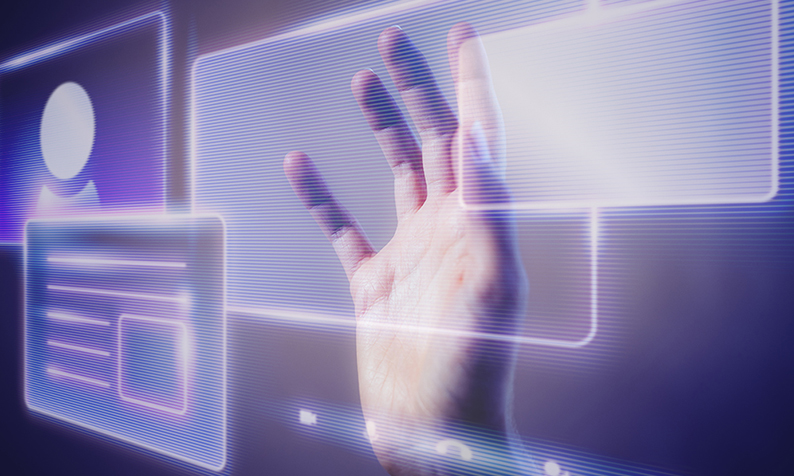
19 May Beauty Tech: Future or present?
[vc_row][vc_column width=”1/2″][vc_column_text]
[/vc_column_text][vc_column_text]Technology has been disrupting the beauty industry—albeit slowly & with varying degrees of success—for years. The integration is inevitable. Just as technology has transformed every aspect of daily life, beauty is not immune to the evolution.
Enter the global coronavirus pandemic.
While certain aspects of our industry came to a screeching & painful halt, it seems as though beauty’s future quickly became beauty’s present as pandemic containment measures accelerated a tech evolution years in the making.[/vc_column_text][/vc_column][vc_column width=”1/2″][vc_single_image image=”6501″ img_size=”400×400″ alignment=”center”][/vc_column][/vc_row][vc_row css=”.vc_custom_1621433850178{margin-top: 20px !important;}”][vc_column][vc_column_text]
[/vc_column_text][vc_column_text]
What’s defining the beauty tech evolution?
Let’s start by defining two technologies advancing the digital beauty experience.
[/vc_column_text][/vc_column][/vc_row][vc_row css=”.vc_custom_1621433773959{margin-top: 50px !important;}”][vc_column width=”1/2″][vc_column_text]
Artificial Intelligence (AI)
A data-based “learning” process for digital systems to perform intelligent tasks in place of humans. It is used to create experiences that are faster, personalized & more intuitive. Facial recognition, digital color matching, accurate identification of skin color, skin type or age, and data-based product recommendations are all examples of AI in beauty.[/vc_column_text][/vc_column][vc_column width=”1/2″][vc_column_text]
Augmented Reality (AR)
An enhancement of reality that takes real-time images and digitally alters them in a realistic way. A virtual try-on app that overlays virtual makeup on a real-time image of the face is an example of AR in beauty.
AR is achieved using AI. The combination of these technologies creates interactive, intelligent experiences that can enhance the way consumers engage with cosmetics.[/vc_column_text][/vc_column][/vc_row][vc_row css=”.vc_custom_1619534470630{margin-top: 40px !important;}”][vc_column][vc_column_text]
[/vc_column_text][vc_column_text]
How was the pandemic accelerated beauty tech?
1- Confinement, Decreased Mobility & e/m-Commerce
Store closures & stay-at-home orders drove an immediate increase in demand for online engagement, interactivity, virtual try-on, digital consultation, and seamless online shopping experiences. Some retailers even duplicated a realistic store experience online, allowing browsers to ‘walk’ through the store and zoom in on products.
2- Touch-Free In-Store
Social distancing & elevated hygiene concerns eliminated product testers and limited consultations with beauty advisers. This brought AR and AI technology to the in-store environment, digitally enhancing point-of-sale to drive product engagement and purchase.
Even as consumers return to the in-store experience, the digital shift has opened an exciting world of opportunities for digitally enhanced retail spaces that can offer personalized product discovery, digital skin/hair diagnostics, touch-free try-on, virtual consultations, and entertainment.[/vc_column_text][/vc_column][/vc_row][vc_row css=”.vc_custom_1619534470630{margin-top: 40px !important;}”][vc_column][vc_column_text]
[/vc_column_text][vc_column_text]
What’s new in the last year?
Nearly every beauty brand, retailer, online media platform and social media app has made an AI/AR play during this past year of acceleration. Here are just a few highlights.
– Perfect Corp., developer of YouCam and other beauty industry virtual technologies, has raised a $50 million Series C led by Goldman Sachs 1
– Pinterest expanded its virtual makeup feature to include 4,000 shades of eyeshadow to complement its previously launched lipstick virtual try-on, which has grown to include 10,000 shades, discoverable from 48 million beauty pins 2
– Neutrogena relaunched its Skin360TM app, which processes over 100,000 skin pixels from every selfie scan to measure 5 different aspects of skin health and has seen more than 115,000 downloads since its relaunch 3,4
– YouTube launched a limited feature allowing some beauty influencers to incorporate an AR try-on experience for products in their videos 2
– Google launched virtual makeup try-on within Google Search, in partnership with ModiFace 2
– L’Oreal launched YSL Rouge Sur Mesure, its first consumer product featuring Perso, a technology incubator project that uses AI and AR to power a physical device. Rouge Sur Mesure Powered by Perso utilizes color cartridge sets of YSL’s iconic Velvet Cream Matte Finish lipsticks to create thousands of bespoke shades with a single touch 4
– Parfums Givenchy became the first luxury beauty brand to propose makeup looks for Animal Crossing‘s creatures 5[/vc_column_text][/vc_column][/vc_row][vc_row css=”.vc_custom_1619534470630{margin-top: 40px !important;}”][vc_column][vc_column_text]
[/vc_column_text][vc_column_text]
It’s exciting! Is it worth it?
At least one data point suggests that it is. In 2020, Pinterest found that users would try on an average of 6 lipstick shades once they began the AR try-on experience, and then were 5x more likely to show purchase intent on try-on compared with standard Pins. 2
Let’s break down some of the benefits and drawbacks as we embrace beauty’s new normal.[/vc_column_text][/vc_column][/vc_row][vc_row css=”.vc_custom_1619534410373{margin-top: 50px !important;}”][vc_column width=”1/2″][vc_column_text]
PROS
- Increased profit margin potential, as AI becomes a gateway to automation
- Personalization & better understanding of the consumer, creating more authentic relationships
- Visual shopping experiences with higher engagement to make brands memorable & encourage product purchase
- Ability to reach customers earlier in their decision-making process
- Media platforms become more engaging & actionable, which can result in increases in usage and click-through of ads
- Organic features like virtual try-on and shoppable content can complement a brand’s paid strategy to drive traffic
[/vc_column_text][/vc_column][vc_column width=”1/2″][vc_column_text]
CONS
- Buy-in and development costs may be potentially prohibitive
- AI has demonstrated racial bias in skin tone recognition and shade matching, which developers are still working to correct
- Privacy and protection of personal data raises ethical questions for companies eager to capitalize on technological advancements
- Loss or limitations of sensorial experiences from product attributes like texture, application and fragrance that are difficult to replicate in a virtual experience
[/vc_column_text][/vc_column][/vc_row][vc_row css=”.vc_custom_1619534446881{margin-top: 50px !important;}”][vc_column][vc_column_text css=”.vc_custom_1621435279656{margin-bottom: 50px !important;}”]
Wherever you stand, there’s no denying that beauty’s future is upon us.
[/vc_column_text][/vc_column][/vc_row][vc_row][vc_column][vc_single_image image=”6516″ img_size=”full” alignment=”center”][/vc_column][/vc_row][vc_row css=”.vc_custom_1621434862590{margin-top: 20px !important;}”][vc_column][vc_column_text]Sources:
1 Women’s Wear Daily
2 TechCrunch.com
3 Neutrogena
4 Fortune
5 Women’s Wear Daily[/vc_column_text][/vc_column][/vc_row]


